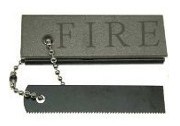Whether it’s a hurricane or a blizzard, a large-scale disaster can seriously disrupt distribution patterns. Unfortunately, it can also create situations that make quick relief distribution a necessity. The only way to maintain supply during a disaster is with detailed preparation and planning long before things go wrong. Below are five important factors to consider from both sides of the supply line.
1. Joint transport services. In case of a crisis, collaboration is key. One fleet may have lost vehicles, while another simply needs people behind the wheel. Aid organizations take advantage of joint transport services to use the best assets from every branch of the distribution, and this strategy works just as well for independent business owners. Companies should create partnerships in advance with local industries.
2. Driver technology. Certain types of fleet tracking software and hardware enable truck drivers to change their route on the spot with advanced GPS technology. If the original intended path is not passable, drivers can immediately determine the best (and shortest) alternative path. This ensures quick deliveries and safe drivers.
3. Change in attitude. Corporate priorities are cost cutting and following standard practices — as they should be. However, a disaster changes the rules. The focus should be on speed and security. Receiving packages in one piece and in a timely fashion is critical. In that same vein, businesses should practice openness and flexibility. Keeping everyone (Read more....)
[…]









